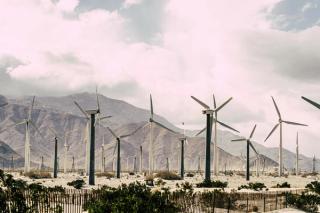
Computational Fluid Dynamics (CFD) modeling: A powerful tool to reduce data center energy use
by Brian Bakowski, Ian Todreas, Jim Hiller
View post

Wind turbine blades have long been touted among wind energy critics as an environmental nightmare due to the limited recycling opportunities available for end-of-life blades and the type of construction materials used in the blade manufacturing process. There have been numerous examples of end-of-life specialist turbine landfills filling up across the world, further fuelling the anti-wind and environmental movements. These criticisms cause issues for wind energy developers who seek to develop clean energy and assist in phasing out carbon-based fuel for power and energy demands.
However, science has progressed in tandem with climate action campaigns, with several multidisciplinary and scientific research projects identifying innovative processes for recycling and re-purposing wind turbine blades in the circular economy. As CO2 targets loom large for many of the world’s economies, it is more important than ever to consider innovative ways in which to cut our carbon footprints, the wind energy industry is partnering with universities, private business and public sector to cut carbon footprints through re-use, repurposing and recycling turbine blades. Here are just a few examples of this in practice:
These are just a few examples of innovation in the recycling and recovery of decommissioned wind turbines in the last three years, and the research is ongoing.
As renewable energy continues to boom across the world more research and innovation into the sensitive decommissioning of turbines, in tandem with the use of widely recycled materials in new turbine blade development, may soon make the existing blade landfills a distant memory.
SLR is committed to helping organisations lower their carbon footprint; please contact our Infrastructure or Power teams for more information.